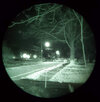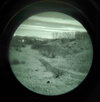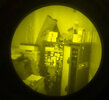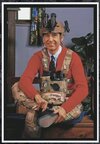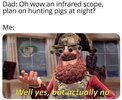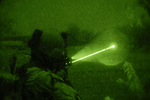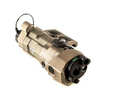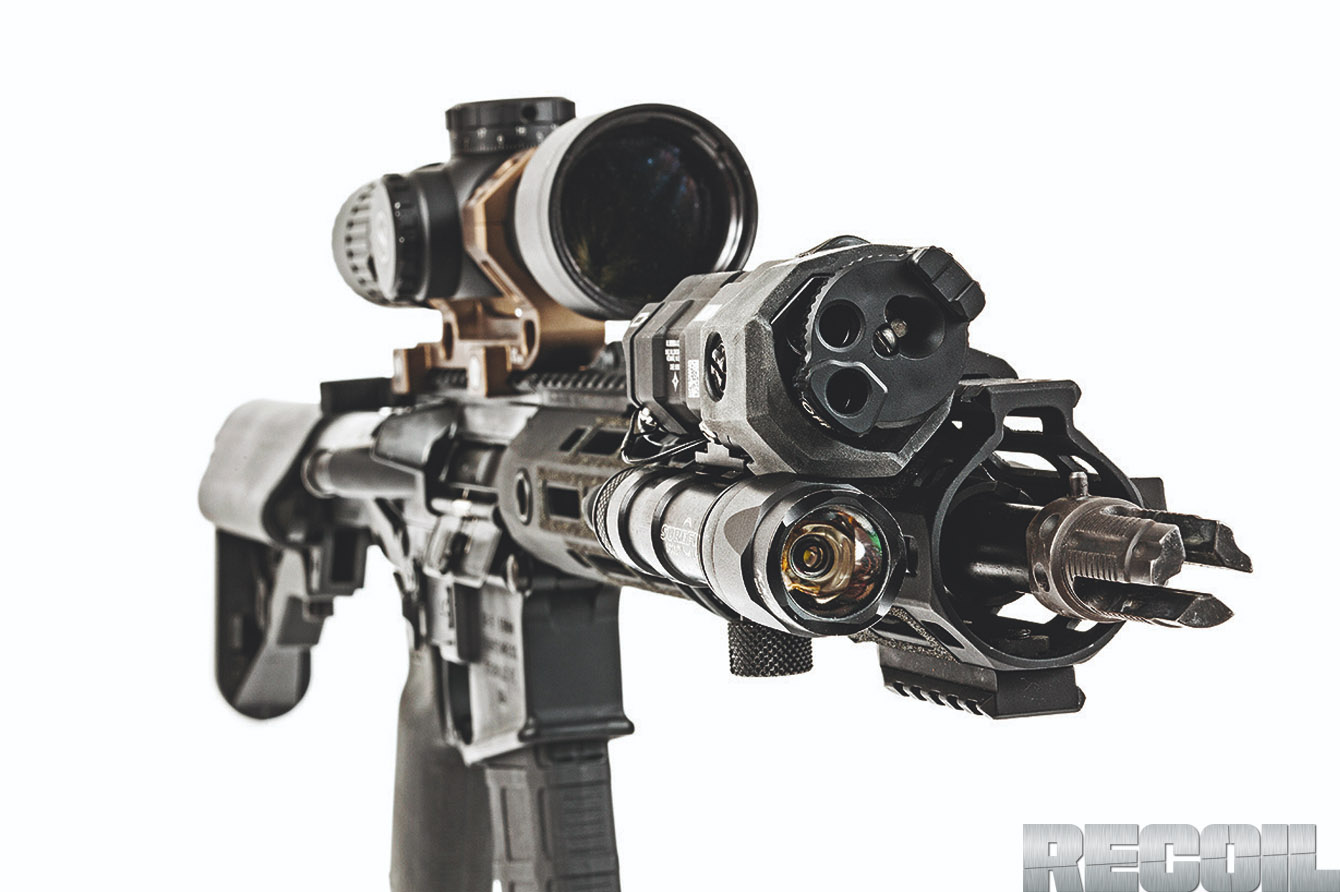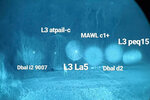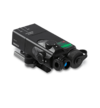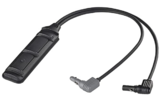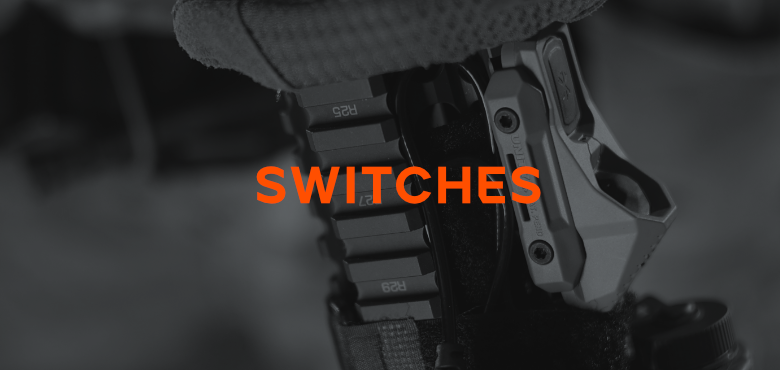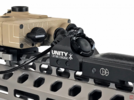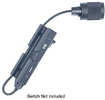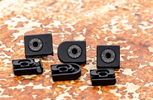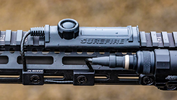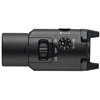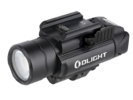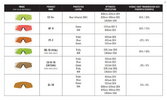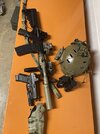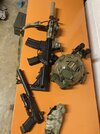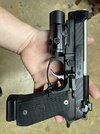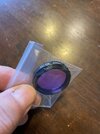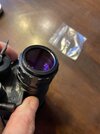Studentofthegun
From the Land of White Pine and Moonshine
Staff member
2A Bourbon Hound OG
Charter Life Member
Benefactor
Supporting Member
Multi-Factor Enabled
Been getting a lot of private messages asking about the best deal going on Night Vision right now. I'll edit this post to make a guide as best I can, with the understanding that I don't have all the answers and am in learning mode as well.
Right now there is a ton of interest in night vision and as such, prices are going up. But if you want a good white phosphor tube at a reasonable price with good specs, I recommend the Photonis ECHO spec. Also recommend that if you're looking to get it in a short timeframe (2-4 weeks), get it from JRH.
Buyer's Guide
If you want to read a really great thread about night vision and thermal, there is a huge one on AR15.com that has tons of information. Lots of pictures and so forth. It's a lot to dig through but worth it. There's also a Night Vision subform there that is excellent for technical info. There is also a buyers guide on the Night Vision Forum there.
OMG Night Vision Thread:
 www.ar15.com
www.ar15.com
Night Vision Forum:
 www.ar15.com
www.ar15.com
HOW DOES A NIGHT VISION MONOCLE WORK?
Here's a diagram.
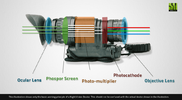
1. Dim light comes in the front of the device (even if it appears dark to you, there is still some light out there).
2. Light particles, known as photons, hit the surface of the photocathode. It takes the photons and makes them into electrons.
3. The electrons then move into the photomultiplier. Those electrons crash into other electrons. Think of it like you're playing pool. You hit the cue ball to break and it strikes the other balls sending them in all directions. In this manner, the number of electrons we have moving around now has been increased.
4. There is a screen that all the electrons hit. When they hit the screen, it produces small sparks of light. Thus, the amount of light that went into the tube is amplified at the sub atomic level and projected via the screen in the night vision device.
So now we know roughly how it works. Now we need to be able to shop for a unit. You'll probably find the devices listed two primary ways:
1. The vendor lists a specific device. The one you see is the one you'll get. They will often share the specs for that particular device.
2. You can order the device but you don't know which exact one you're going to get. Instead, the vendor will list guaranteed minimum specifications. So you know your device is going to be better than the minimums but you won't know exactly how much.
For example, you might see this:
"Typical specifications P-45 WHITE PHOSPHOR tube, MIN FOM 1800, MIN RES: 62, SPOT SPEC: 1/0 - 2/1 - 3/2/1 Operating hours: 10,000+"
So what do all of those things mean? I have the quick and dirty explanations below but for more details I recommend going to:

 www.nite-walker.com
www.nite-walker.com
Green Phosphor vs. White Phosphor
I've seen both and can tell you that I personally prefer white phosphor. However, I've also looked through some really sharp green tubes. Some people believe that the white phosphor has less eye fatigue. I would be quite happy with green so long as the specs are good.
Examples of green vs white:

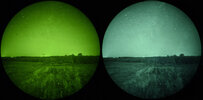
Figure of Merit (FOM)
FOM is calculated by multiplying the line pairs per millimeter by the signal to noise ratio. In other words, FOM = Resolution x SNR. FOM is a quick way to measure how well the image intensifier (or tube) performs. That's not to say it is the only metric you want to worry about, but it is a key one. I would recommend a FOM of 2000 or greater if possible. I would not go below 1800.
Signal to noise ratio (SNR)
This measures how the photocathode performs, which based on how the image intensifier works, is probably the most important measure of performance. It measures how well the dim light particles are parsed out from the "noise" (other factors that would excite the electrons). I would not go below 26 for the SNR. Anything about 30 or greater is really good.
Halo
This is the halo effect that you see around lights. I'm getting older so I already experience that with oncoming traffic when driving at night. The halo causes the light source to "bloom" making it harder to see detail about that object. That applies if it is a light on the side of a building, a flashlight someone is using in the distance, or even the moon.
Luminance gain
This measures the level of light amplification the tube can produce when the gain is turned all the way up. Each device should have a gain knob that allows you to increase or decrease the gain. When you turn the gain up, you will get what I call speckles. Looks a bit like a sparkling effect, but when you turn it up, the tube becomes more sensitive and will increase the amount of light being sent to your eye. Turn it down and you'll see less sparkles but also a dimmer image. My spec sheet doesn't say luminance. It just says "gain" and the numbers are apparently measured a little differently that "luminance".
Resolution (or Limiting Resolution at the Center)
This one is pretty self explanatory. Measures level of detail and the sharpness of the image being rendered via the screen.
Recommend a resolution at center of 62 lp/mm or greater.
Spots and Blemishes
Spots: All night vision tubes have spots and it is simply part of the result of the process used to manufacture intensifier tubes. The important considerations about the spots are location and size. The size is the diameter, so that's pretty straight forward. One could probably tolerate a larger spot so long as it isn't in the middle of the screen. To describe the location the spot(s) appear in the tube, manufacturers use zones.
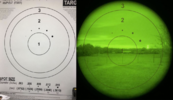
What you can see above is how the zones are laid out. Zone 1 is in the center, Zone 2 in the middle, and Zone 3 is the perimeter. Also, you can see from the illustration that there are spots of different sizes. If you have a large spot right smack in the middle of Zone 1, that could be no bueno. But spots are relatively small and don't typically render the tube unusable.
Blems, on the other hand, are different from spots. A blem could occur as a "laser burn", where a laser has been shined at the tube and ruined part of the tube. It's really bad when that happens in Zone 1, like this image:

So if you are shopping for a tube on the intarwebz, make sure you have some sort of picture of what the tube actually looks like in the dark. See if you can also get the spec sheet, or at least a list of the specs. This is why I think it can be risky to buy used night vision off Facebook from an individual. You can get some great deals that way but you must know what you're getting.
Dual Tubes vs. Monocles
For the most part, this will likely be dictated by your budget. Dual tubes, or binoculars, are super cool but also more expensive. There are different options such as binos, dual tubes, ruggedized, etc. The next step up from a single tube is ruggedized night vision. You'll have two tube of course, but their movement options are limited.
Ruggedized has a bridge that is more or less fixed. Dual night vision is reticulating. You can move the tubes independently of one another. This comes in handy if you're wearing your nods and want to flip just one tube out of the way to aim a rifle equipped with a thermal scope.
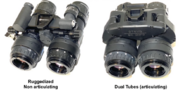
While waiting for my monocle to show up, I was a little bit disenfranchised by some of the people saying that one should skip having a monocle and save up for dual tubes. On the one hand, I get it. When I got mine, I went and visited a buddy of mine who also had a white phosphor tube. I held a tube up to each eye...and it was amazing. As soon as I could, I placed an order for dual tubes. Do I regret having a monocle? No, because it has taught me a bit about equipment and what it will and won't do.
Also, I will be keeping my monocle. I learned something really important just standing on the back porch letting my buddies check out my gear. If you have the best equipment under the sun, it is less fun if you can only enjoy it by yourself. It's a lot more fun if your buddy can also see in the dark. It doesn't hurt to have an extra tube. Imagine how cool it would be if you went out of town and were able to throw your extra tube and a skull crusher (which is a soft head mount) in your bug out bag. Talk about being able to get home a lot safer. What if there is a natural disaster like Katrina? Recall those stories about people cowering in their homes when it was pitch black and the looters were moving through the neighborhoods? If you're defending your home and loved ones, it is nice to be able to hand a setup to someone so they can watch your back. These devices have very narrow fields of view. Two sets of night eyes are better than one.
There are some self-described prepper experts out there that claim that night vision is one of the most important prep items you need to acquire. Opinions vary on this, but it is true that being able to see in the dark is a huge advantage. Night vision monocles are good for lots of different things. Whether it is heading into the deer stand at 4:30am or simply stargazing, a night vision monocle is a really great thing to have. It is a shame that many people buy them and they just sit in a closet. I've seen some folks attach them to telescopes with amazing results.
Note: NEVER use rechargeable batteries with a night vision monocle. I'm not certain why this is, but it is not good for the device. Some have reported batteries rupturing and the acid ate through the plastic housing and messed up the tube. They take AA batteries so just buy a bunch of good quality ones and don't fret about it. Each battery can power a monocle for 40+ hours.
[ Placeholder for future writeup ]
Right now there is a ton of interest in night vision and as such, prices are going up. But if you want a good white phosphor tube at a reasonable price with good specs, I recommend the Photonis ECHO spec. Also recommend that if you're looking to get it in a short timeframe (2-4 weeks), get it from JRH.
Buyer's Guide
If you want to read a really great thread about night vision and thermal, there is a huge one on AR15.com that has tons of information. Lots of pictures and so forth. It's a lot to dig through but worth it. There's also a Night Vision subform there that is excellent for technical info. There is also a buyers guide on the Night Vision Forum there.
OMG Night Vision Thread:
OMFG NIGHT VISION - Page 1 - AR15.COM
Firearm Discussion and Resources from AR-15, AK-47, Handguns and more! Buy, Sell, and Trade your Firearms and Gear.
Night Vision Forum:
NV Tech Talk - AR15.COM
Firearm Discussion and Resources from AR-15, AK-47, Handguns and more! Buy, Sell, and Trade your Firearms and Gear.
HOW DOES A NIGHT VISION MONOCLE WORK?
Here's a diagram.

1. Dim light comes in the front of the device (even if it appears dark to you, there is still some light out there).
2. Light particles, known as photons, hit the surface of the photocathode. It takes the photons and makes them into electrons.
3. The electrons then move into the photomultiplier. Those electrons crash into other electrons. Think of it like you're playing pool. You hit the cue ball to break and it strikes the other balls sending them in all directions. In this manner, the number of electrons we have moving around now has been increased.
4. There is a screen that all the electrons hit. When they hit the screen, it produces small sparks of light. Thus, the amount of light that went into the tube is amplified at the sub atomic level and projected via the screen in the night vision device.
So now we know roughly how it works. Now we need to be able to shop for a unit. You'll probably find the devices listed two primary ways:
1. The vendor lists a specific device. The one you see is the one you'll get. They will often share the specs for that particular device.
2. You can order the device but you don't know which exact one you're going to get. Instead, the vendor will list guaranteed minimum specifications. So you know your device is going to be better than the minimums but you won't know exactly how much.
For example, you might see this:
"Typical specifications P-45 WHITE PHOSPHOR tube, MIN FOM 1800, MIN RES: 62, SPOT SPEC: 1/0 - 2/1 - 3/2/1 Operating hours: 10,000+"
So what do all of those things mean? I have the quick and dirty explanations below but for more details I recommend going to:

Night Vision Specifications for Dummies 101
I've been asked many times what the specs mean, what good ones are, and decided something needs to be up on the site. So here ya go!
 www.nite-walker.com
www.nite-walker.com
Green Phosphor vs. White Phosphor
I've seen both and can tell you that I personally prefer white phosphor. However, I've also looked through some really sharp green tubes. Some people believe that the white phosphor has less eye fatigue. I would be quite happy with green so long as the specs are good.
Examples of green vs white:


Figure of Merit (FOM)
FOM is calculated by multiplying the line pairs per millimeter by the signal to noise ratio. In other words, FOM = Resolution x SNR. FOM is a quick way to measure how well the image intensifier (or tube) performs. That's not to say it is the only metric you want to worry about, but it is a key one. I would recommend a FOM of 2000 or greater if possible. I would not go below 1800.
Signal to noise ratio (SNR)
This measures how the photocathode performs, which based on how the image intensifier works, is probably the most important measure of performance. It measures how well the dim light particles are parsed out from the "noise" (other factors that would excite the electrons). I would not go below 26 for the SNR. Anything about 30 or greater is really good.
Halo
This is the halo effect that you see around lights. I'm getting older so I already experience that with oncoming traffic when driving at night. The halo causes the light source to "bloom" making it harder to see detail about that object. That applies if it is a light on the side of a building, a flashlight someone is using in the distance, or even the moon.
Luminance gain
This measures the level of light amplification the tube can produce when the gain is turned all the way up. Each device should have a gain knob that allows you to increase or decrease the gain. When you turn the gain up, you will get what I call speckles. Looks a bit like a sparkling effect, but when you turn it up, the tube becomes more sensitive and will increase the amount of light being sent to your eye. Turn it down and you'll see less sparkles but also a dimmer image. My spec sheet doesn't say luminance. It just says "gain" and the numbers are apparently measured a little differently that "luminance".
Resolution (or Limiting Resolution at the Center)
This one is pretty self explanatory. Measures level of detail and the sharpness of the image being rendered via the screen.
Recommend a resolution at center of 62 lp/mm or greater.
Spots and Blemishes
Spots: All night vision tubes have spots and it is simply part of the result of the process used to manufacture intensifier tubes. The important considerations about the spots are location and size. The size is the diameter, so that's pretty straight forward. One could probably tolerate a larger spot so long as it isn't in the middle of the screen. To describe the location the spot(s) appear in the tube, manufacturers use zones.

What you can see above is how the zones are laid out. Zone 1 is in the center, Zone 2 in the middle, and Zone 3 is the perimeter. Also, you can see from the illustration that there are spots of different sizes. If you have a large spot right smack in the middle of Zone 1, that could be no bueno. But spots are relatively small and don't typically render the tube unusable.
Blems, on the other hand, are different from spots. A blem could occur as a "laser burn", where a laser has been shined at the tube and ruined part of the tube. It's really bad when that happens in Zone 1, like this image:

So if you are shopping for a tube on the intarwebz, make sure you have some sort of picture of what the tube actually looks like in the dark. See if you can also get the spec sheet, or at least a list of the specs. This is why I think it can be risky to buy used night vision off Facebook from an individual. You can get some great deals that way but you must know what you're getting.
Dual Tubes vs. Monocles
For the most part, this will likely be dictated by your budget. Dual tubes, or binoculars, are super cool but also more expensive. There are different options such as binos, dual tubes, ruggedized, etc. The next step up from a single tube is ruggedized night vision. You'll have two tube of course, but their movement options are limited.
Ruggedized has a bridge that is more or less fixed. Dual night vision is reticulating. You can move the tubes independently of one another. This comes in handy if you're wearing your nods and want to flip just one tube out of the way to aim a rifle equipped with a thermal scope.

While waiting for my monocle to show up, I was a little bit disenfranchised by some of the people saying that one should skip having a monocle and save up for dual tubes. On the one hand, I get it. When I got mine, I went and visited a buddy of mine who also had a white phosphor tube. I held a tube up to each eye...and it was amazing. As soon as I could, I placed an order for dual tubes. Do I regret having a monocle? No, because it has taught me a bit about equipment and what it will and won't do.
Also, I will be keeping my monocle. I learned something really important just standing on the back porch letting my buddies check out my gear. If you have the best equipment under the sun, it is less fun if you can only enjoy it by yourself. It's a lot more fun if your buddy can also see in the dark. It doesn't hurt to have an extra tube. Imagine how cool it would be if you went out of town and were able to throw your extra tube and a skull crusher (which is a soft head mount) in your bug out bag. Talk about being able to get home a lot safer. What if there is a natural disaster like Katrina? Recall those stories about people cowering in their homes when it was pitch black and the looters were moving through the neighborhoods? If you're defending your home and loved ones, it is nice to be able to hand a setup to someone so they can watch your back. These devices have very narrow fields of view. Two sets of night eyes are better than one.
There are some self-described prepper experts out there that claim that night vision is one of the most important prep items you need to acquire. Opinions vary on this, but it is true that being able to see in the dark is a huge advantage. Night vision monocles are good for lots of different things. Whether it is heading into the deer stand at 4:30am or simply stargazing, a night vision monocle is a really great thing to have. It is a shame that many people buy them and they just sit in a closet. I've seen some folks attach them to telescopes with amazing results.
Note: NEVER use rechargeable batteries with a night vision monocle. I'm not certain why this is, but it is not good for the device. Some have reported batteries rupturing and the acid ate through the plastic housing and messed up the tube. They take AA batteries so just buy a bunch of good quality ones and don't fret about it. Each battery can power a monocle for 40+ hours.
[ Placeholder for future writeup ]
Last edited:




